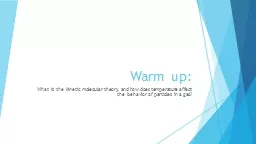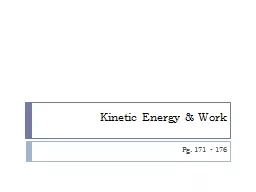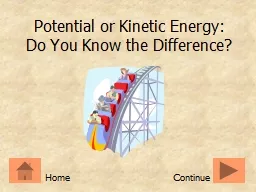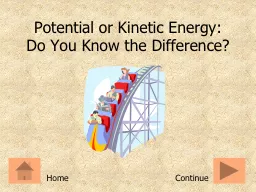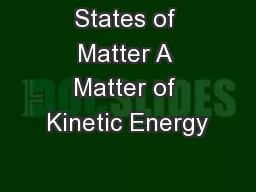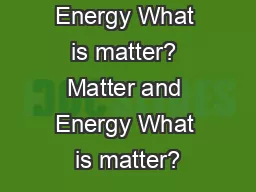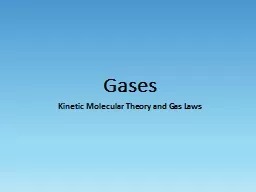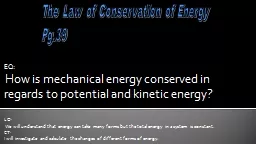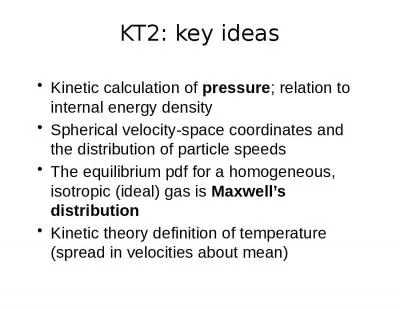PPT-Warm up: What is the kinetic molecular theory, and how does temperature affect the behavior
Author : imetant | Published Date : 2020-06-22
Objective Students will be able to explain on the molecular level how heating and cooling affect the density of water The purpose is to know water on Earth is
Presentation Embed Code
Download Presentation
Download Presentation The PPT/PDF document "Warm up: What is the kinetic molecular t..." is the property of its rightful owner. Permission is granted to download and print the materials on this website for personal, non-commercial use only, and to display it on your personal computer provided you do not modify the materials and that you retain all copyright notices contained in the materials. By downloading content from our website, you accept the terms of this agreement.
Warm up: What is the kinetic molecular theory, and how does temperature affect the behavior: Transcript
Download Rules Of Document
"Warm up: What is the kinetic molecular theory, and how does temperature affect the behavior"The content belongs to its owner. You may download and print it for personal use, without modification, and keep all copyright notices. By downloading, you agree to these terms.
Related Documents

